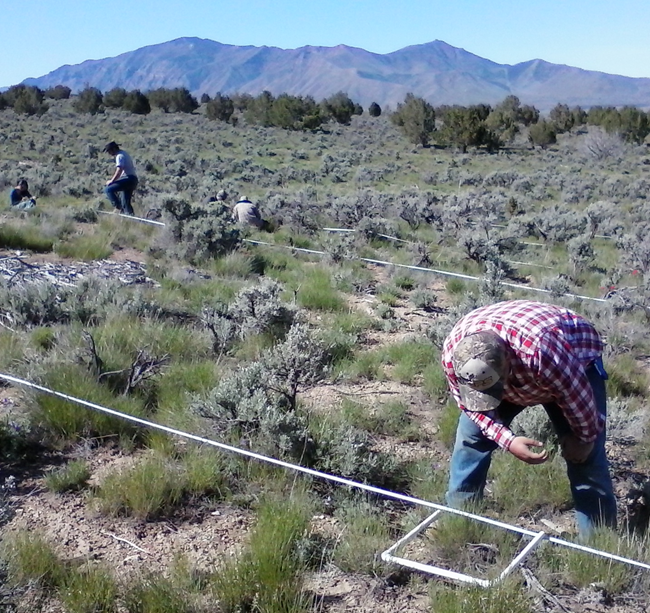Vegetation Change
Vegetation is changing both through time and with treatments. We measure every species present along permanent transects to track shifts in native:invasive dynamics, species diversity, successional stage, and habitat for terrestrial wildlife. Some of the major findings from the first 10 years of vegetation monitoring are that in the shrubland network, cheatgrass is increasing regardless of treatment, and that sagebrush recovery is very slow after treatment. We saw more positive results in the woodland network: herbaceous vegetation is recovering well after treatments but includes both native and non-native species. Moist/cool sites and mechanical treatments tended to have more positive recovery trajectories than warm/dry and prescribed burn treatments.
Latest Resources on Vegetation
View synthesis. Our review revealed tradeoffs in woody fuel treatments between reducing canopy fuels vs. increasing understory herbaceous vegetation (fuels) and fire behavior. In pinyon-juniper expansion areas, all treatments decreased crown fire risk. Prescribed fire and cut and broadcast burn treatments reduced woody fuels long-term but had higher risk of invasion. Mechanical treatments left understory…
View article. Coating seeds with amendments to increase germination, emergence, and establishment is a promising strategy for dryland restoration. Seed coatings containing fungicides offer a potential solution in regions where fungal pathogens cause seed mortality during the winter stratification period between late fall seeding and spring germination. The effectiveness of the fungicide treatment, however, may…
View article. In arid and semiarid systems, positive effects of nurse shrubs generally occur immediately underneath and around shrub canopies, creating microsites that can be targeted to promote plant establishment in restoration settings. Alternatively, the best microsites may occur in the interspace zone immediately surrounding nurse shrubs if positive abiotic effects extend beyond nurse shrub…


